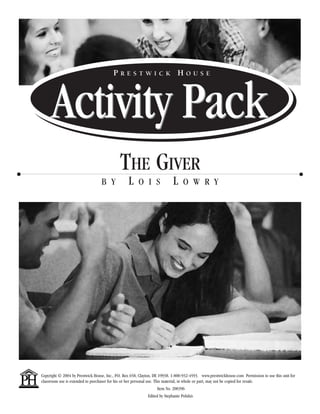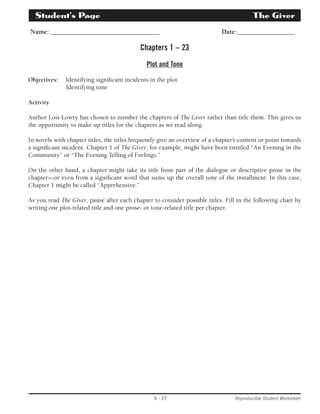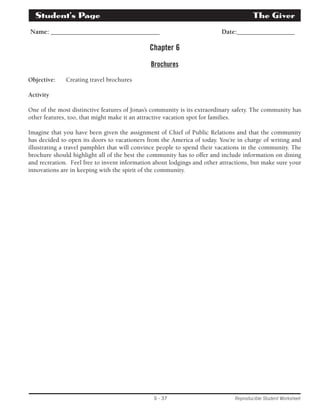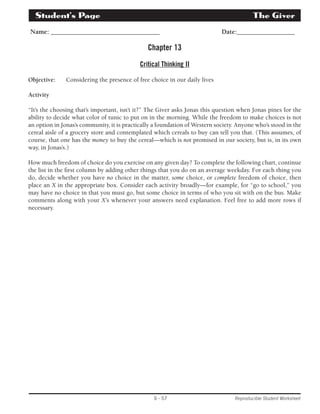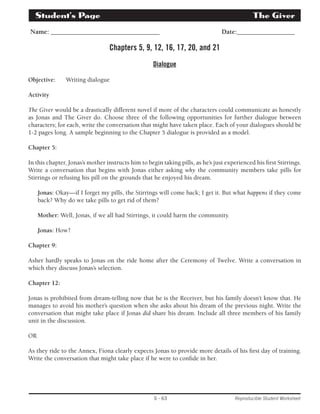The document is an activity packet for teaching Lois Lowry's novel "The Giver". It contains several multi-part activities for students to complete as they read the book, including vocabulary exercises, analyzing the community's rules and rituals, assigning chapter titles, creating a travel brochure for the community, and designing memory collages. The packet provides discussion questions, writing prompts, and opportunities for creative student work related to themes and events in the novel.
